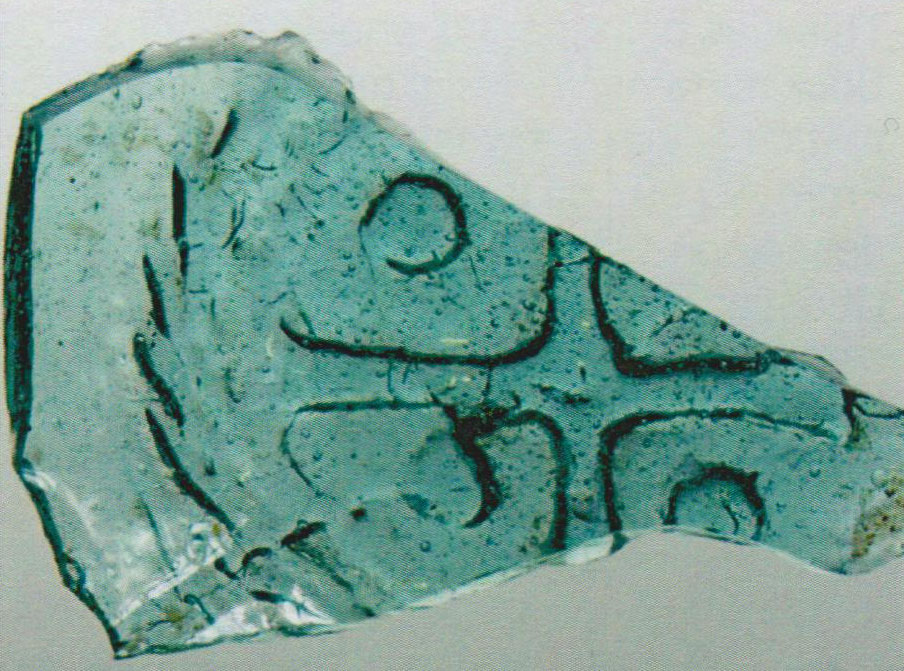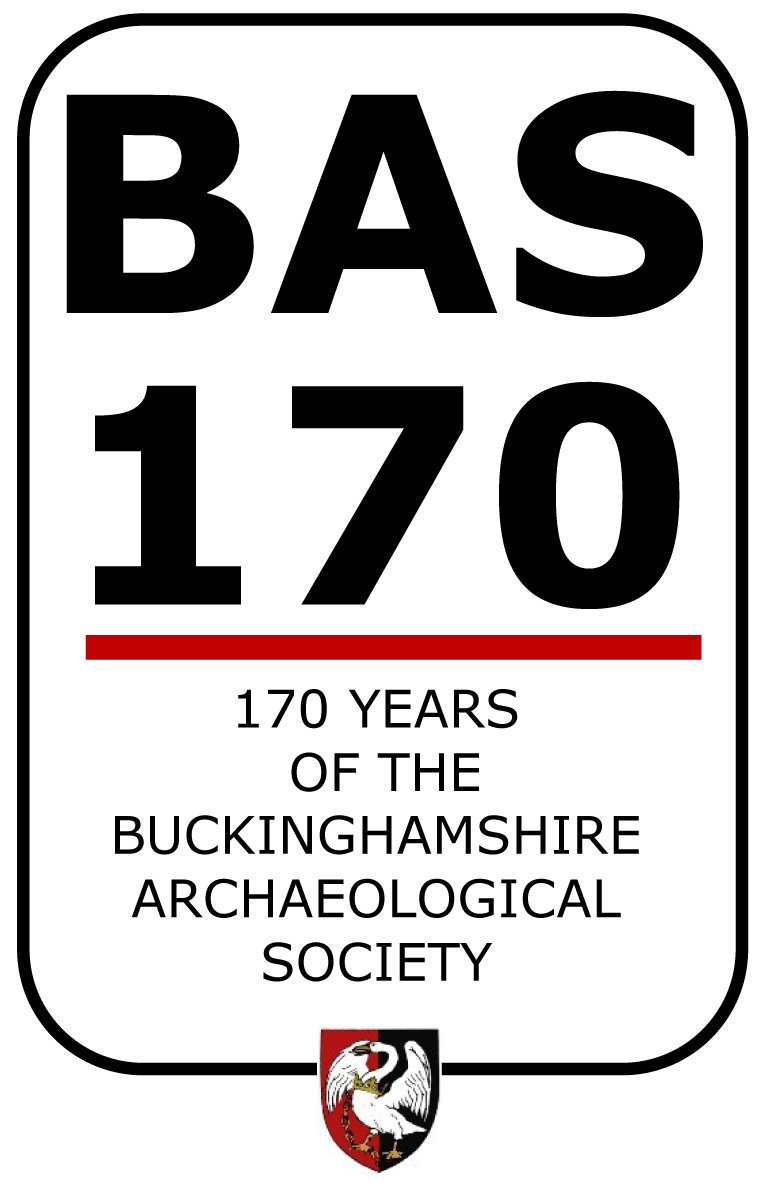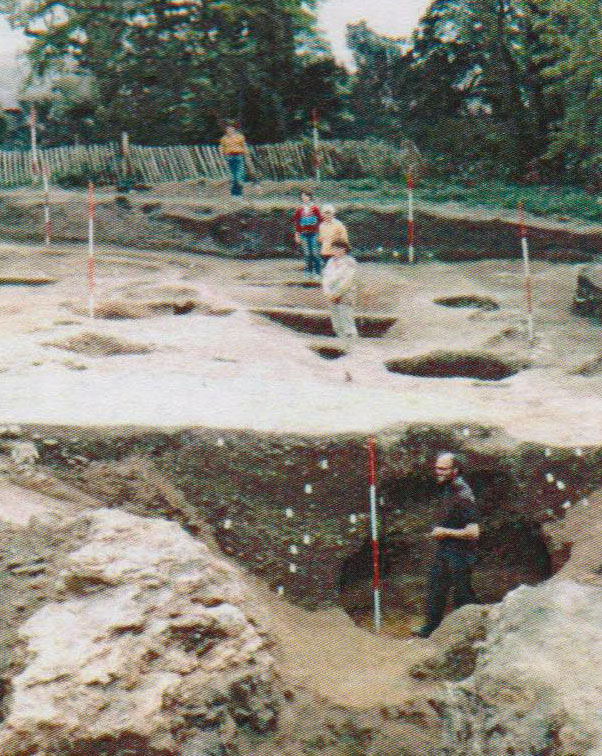
|
|
|
|
|
|
|
|
|
|
|
|
|
|
|
|
|
|
|
|
|
|
|
|
|
|
|
|
|
|
|
|
Aylesbury's glass cross – a Christian symbol from the Anglo-Saxon 7th century
A HISTORY OF BUCKINGHAMSHIRE IN TWELVE OBJECTS

This piece of
seventh-century glass, excavated at Aylesbury, is the earliest Christian object known from Anglo-Saxon Buckinghamshire.
OUR SIXTH OBJECT – a broken fragment of 1400-year-old glass – has a deep resonance that belies its humble form.
It was found 30 years ago in the centre of Aylesbury's old town during salvage excavations which were carried out ahead of a new building development at Prebendal Court, beside St Mary's Church. Its significance lies in its seventh-century date and the fact that it is marked with a cross, making it the earliest identifiably Christian object to be found in Buckinghamshire.
It marks the growth of Christian belief and culture among the Anglo-Saxons, descendants of incomers from northern Europe who shaped this region in the centuries after the Romans had left in the early fifth century AD.
During the Roman occupation extensive contact with the Romans' Mediterranean lifestyle led many of the county's local Celtic-speaking occupants to adopt a fairly comfortable lifestyle, particularly the better-off who had learnt Latin. This was based around the newly engineered roads, sophisticated towns – such as Magiovinium near Fenny Stratford, a regularised currency, a reliable import market, and later, for some at least, conversion to Christianity. All of that was to change.
Over the next three centuries new powerful ruling elites emerged. Stone buildings were replaced by wooden ones (for example those excavated at Horton, Walton, Pitstone and Pennylands in Milton Keynes), barter replaced coinage and Buckinghamshire folk learned to use names of ‘pagan’ deities for days of the week: Tiw's day, Woden's day and Thor's day.
This was not a period when Christianity could flourish in Buckinghamshire, though it did survive in some areas of England, particularly in the west, but also in Wales, Scotland and Ireland.
From AD 597 everything changed again when Augustine was despatched from Rome to convert the English. The later spread of Christianity was largely due to the building of minster churches established with the support of local chieftains, kings or queens. There were certainly three in Buckinghamshire – at Aylesbury, Buckingham and Haddenham – but probably others as well.
The excavation in which the glass fragment was found took place in 1987, before the Prebendal Court was built to the north-west of St Mary's. The excavation showed that that the old Iron Age ditch, which had surrounded the town before the Roman period, had been reused as a boundary in the seventh century. This was the boundary of land belonging to Aylesbury's minster, which is associated with St Osyth.
In the recent past numerous burials have been found beneath Aylesbury's modern buildings, extending from St Mary's Church as far as Temple Square. Athough some of these butials may pre-date the creation of the minster, and most were part of the large minster cemetery, which was built over in later centuries. Nothing remains of Aylesbury's Anglo-Saxon minster church itself above ground but to the east of Aylesbury the parish church at Wing is a splendid survival from the Anglo-Saxon period.
Gradually nearly every village in the county acquired a church. Most of the Buckinghamshire churches that srill exist today date from the Norman period or later – but it is suspected that beneath many of them evidence of an earlier history is preserved, hidden within their fabric or below ground.

ARTICLE BY MICHAEL FARLEY.
This fragment of seventh-century Christian glass is Object 6 in the series ‘A History of Buckinghamshire in Twelve Objects’, marking the 170th anniversary of the founding of the Buckinghamshire Archaeological Society in 1857. The glass fragment itself can be seen in the Buckinghamshire County Museum in Aylesbury, which is also the base of the Bucks Archaeological Society.

AN EXCAVATION PHOTOGRAPH (LEFT)
shows the two-metre deep defensive ditch that surrounded the Iron-Age settlement at Aylesbury, which was later re-used
as the seventh-century minster boundary.
This is reproduced from
‘Iron-Age Ritual, a Hillfort
and Evidence for a
Minster at Aylesbury’,
by Mike Farley,
which gives details of the
excavations and their results
(Oxbow Books 2012,
ISBN 9781842174845).